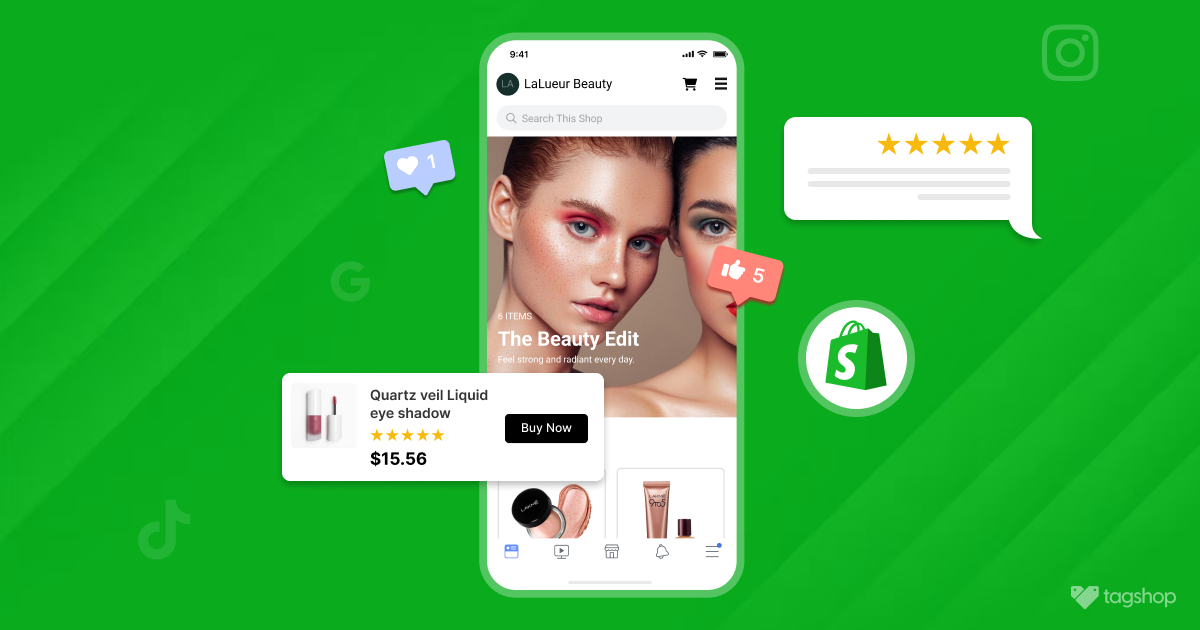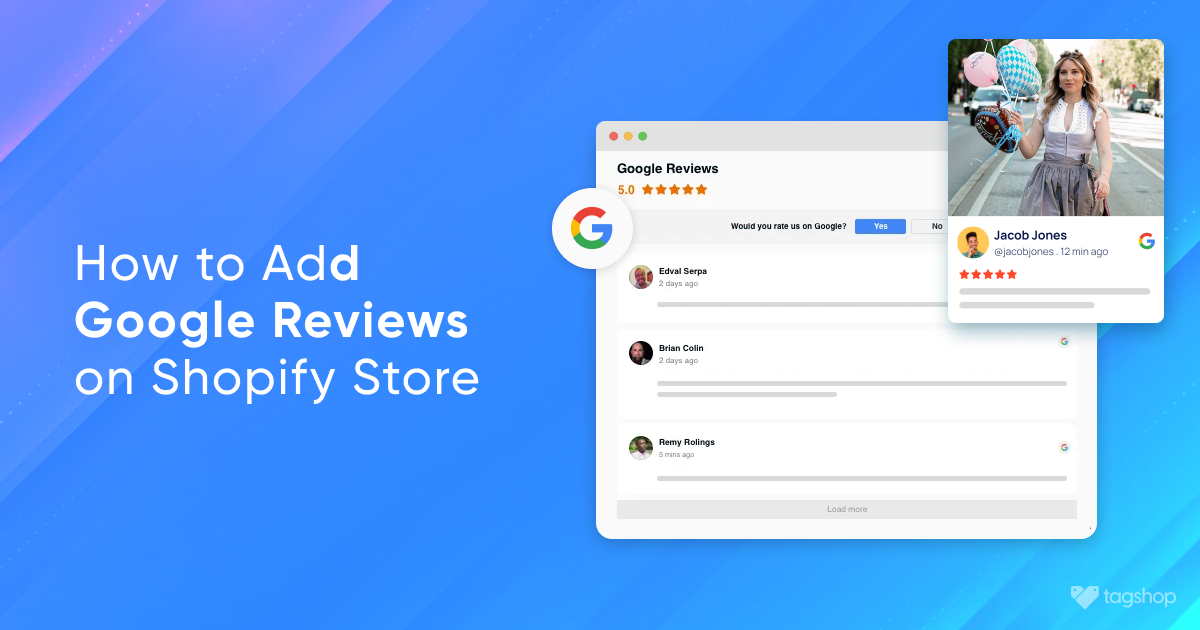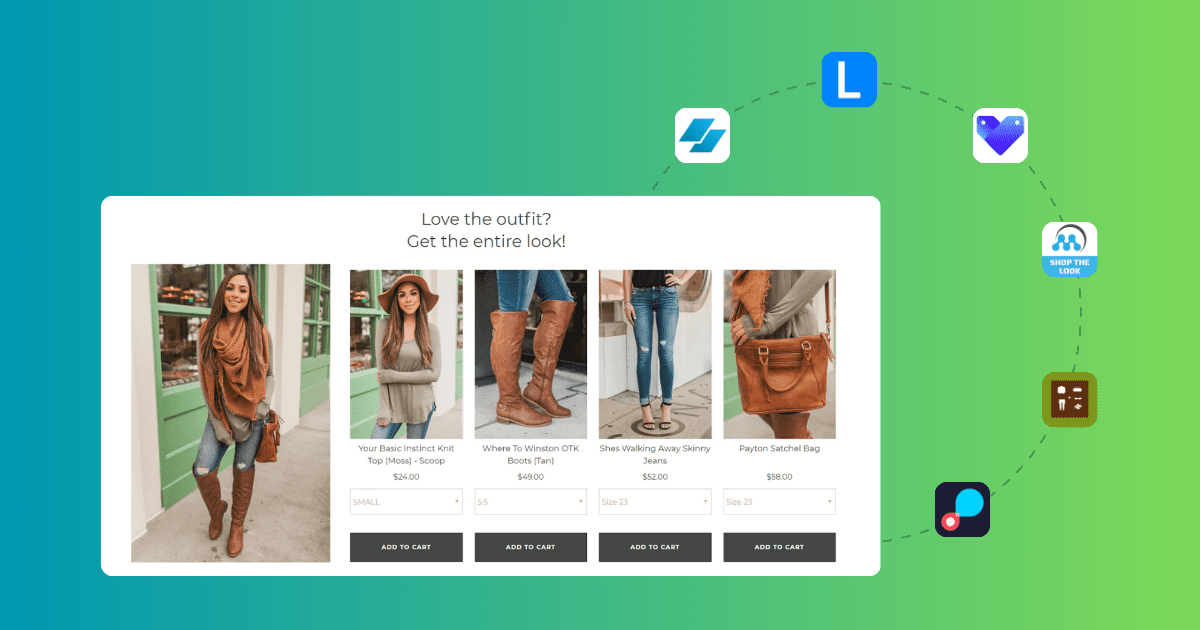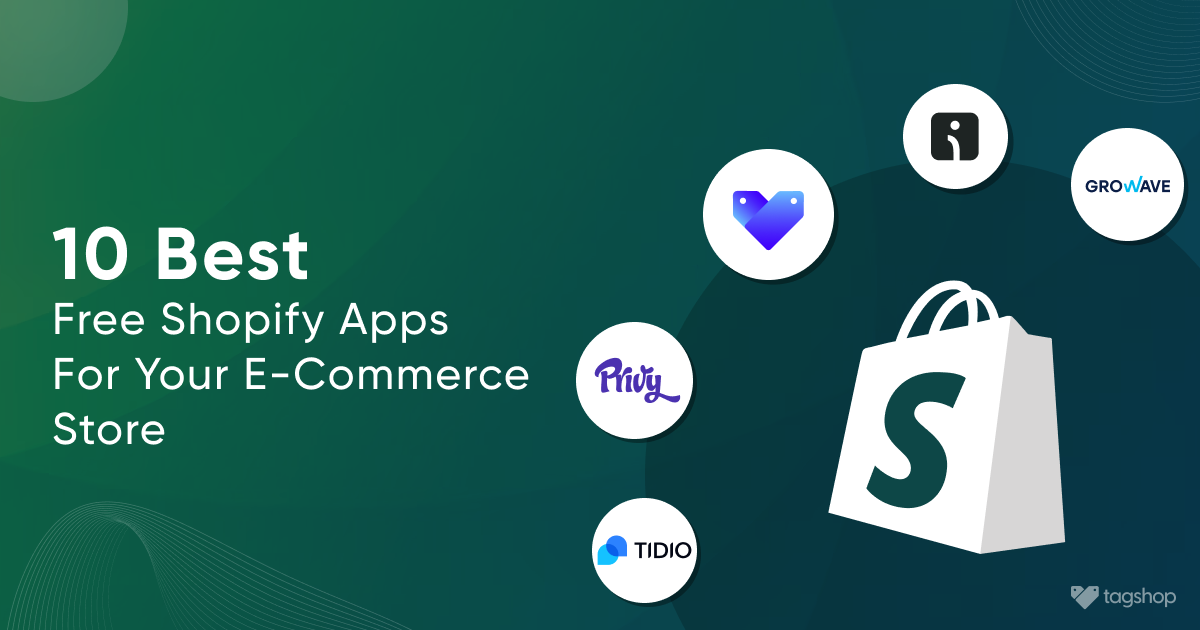How to Collect Customer Reviews on Your Shopify Store
The biggest gap between an abandoned purchase and a successful sale is a customer who gets convinced. Assurity plays a crucial role in this process and inspires successful purchases.
But, how does a brand provide this assurance to customers? Simply, through a relatable and trusted voice that can not only vouch for your brand but also show customers the value a purchase might add to their lives.
That’s why customer reviews hold such an important place in e-commerce marketing. In the current times, when authenticity reigns supreme, and no other form of advertising even comes close, social proof is a strategy that brands ought to capture.
In this blog, we will help you learn how to collect customer reviews and utilize them perfectly to build a successful Shopify store.
The Power of Customer Reviews for Shopify Stores
Customers are most easily influenced by reviews. When they see an existing customer talking about a brand or product in even a few relatable lines, potential customers base their purchase decisions on that information.
And, why not? After all, reviews are known to be the most authentic source of social proof. Their very job is to give people a true insight into how a product performs, and for brands, it is an excellent source of feedback – basically, it is a win-win situation for both parties.
Collecting customer reviews becomes essential for businesses, especially e-commerce. Here are some benefits of it:
Builds Brand Credibility
Customer reviews offer honest insight into a product’s performance. When they are displayed openly on a platform, customers feel positive about a brand, boosting the brand’s credibility by making it seem more trusted.
Boosts Conversions
The days are long gone when traditional advertising was compelling enough to convert more customers. Now, customers use resources like reviewing platforms to learn more about a product or brand before purchasing. By displaying customer reviews openly, brands can convince customers better about their products through other customers’ experiences, ultimately improving conversions.
Increases Customer Engagement
The e-commerce industry is moving towards steady competition, and keeping customers interested in a brand has become more challenging than ever. By displaying customer reviews on an e-commerce store, brands can make customers feel seen and valued, encouraging more customers to do the same for them and improving the engagement rate.

Good for SEO Visibility
Reviews can boost a brand’s visibility significantly on search engines. When customers leave reviews for brands, they usually target important keywords or best-selling points. By displaying them on the website, brands can boost relevant searches more effectively.
Sets You Apart from Competitors
Statistics show that customers consider a product rating below 4 stars suspiciously low. This shows that businesses with high ratings and positive reviews have a competitive advantage over those with lower ratings. Consumers are more likely to choose a business with good reviews over one with poor or no reviews.
Best 5 Strategies to Collect Customer Reviews
If you search online queries like “how many customers read reviews,” you will find results that show that up to 99% of customers read reviews before making a purchase online. But what’s certain is that not 99% of brands utilize customer reviews as effectively as they should. So if you’re one of them, you still have a competitive advantage.
However, we understand it’s not easy to collect customer reviews. So, if you’re wondering how to collect reviews from customers, here are some ways to collect customer reviews easily:
Utilize Reviews & Ratings App
Collecting reviews and ratings manually is a cumbersome process and requires a lot of dedicated effort. By relying on an efficient reviews and rating platform, brands can streamline the process and collect business reviews easily. Additionally, businesses can leverage an open-source web-scraping framework to gather reviews from various sources automatically, reducing manual workload and ensuring comprehensive data collection.
Many tools on Shopify store, for example, Tagshop, allow businesses to collect reviews and ratings from customers directly without having to log in to any platform. Brands can create custom QR code to place on their website homepage or generate a shareable link to SnapUp uploader, where customers can upload visual reviews such as videos and images, or write reviews and give ratings.
What’s more is, brands can then utilize the collected customer reviews to sell. Tagshop allows businesses to curate a shoppable feed of reviews and publish them on e-commerce touchpoints.
1. Making It Easy To Leave Review
Another strategy to collect customer reviews is simplifying the process of leaving reviews for customers. Many customers report having difficulty finding the field where they can submit reviews.
To make it easy, brands can offer links to redirect customers where they can post reviews or utilize SMS or WhatsApp to simplify the process. Other strategies may include removing the barriers such as mandatory account creation and minimizing the number of steps. This will ensure more participation from customers.
2. Post-purchase emails
Many companies also host post-purchase email campaigns to collect customer feedback. This is a proactive approach to collecting reviews. These emails can be automated and sent shortly after a customer purchases, prompting them to share their experiences.
Post-purchase emails catch customers when their experience with the product or service is fresh in their minds, increasing the likelihood of receiving timely and detailed reviews. Personalizing these emails can also enhance engagement and encourage more customers to participate.
3. Incorporate social media
You might think that reviews and ratings are supposed to be textual, but hear us out – there’s no better form of social proof than user-generated content. If you want more social proof for your brand, encourage customers to share their experiences and feedback on social media through posts, stories, or short videos.
Leveraging social media platforms to collect reviews can expand your reach and engagement, allowing you to build better brand value, overall. Moreover, brands can utilize this UGC on other e-commerce touchpoints, with permission of course.
Utilizing Social Proof Shopify Apps can help you integrate this content seamlessly into your online store, amplifying customer testimonials and building trust with potential buyers.
4. Loyalty programs
Another strategy for collecting business reviews is hosting loyalty programs. Incorporating a review component into your loyalty program can encourage customers to leave reviews in exchange for rewards, points, or discounts.
This can motivate loyal customers to engage with your brand and share their experiences. Additionally, loyalty programs that reward customers for leaving reviews can increase participation rates and generate more reviews from customers who are already engaged and invested in your brand.
These approaches aligns with Shopify customer retention strategies, as it fosters stronger relationships with existing customers and keeps them coming back for more.
Challenges of Collecting Customer Reviews
Customer reviews are essential – by now, we know it. Even studies suggest that 60% of consumers believe the number of reviews a business has is crucial when deciding whether to use its services. However, some challenges come along with it.
Here are 3 most common challenges:
1. Encouraging Participation
The first challenge to collect customer reviews is, apparently, the collection. Getting customers to leave reviews is a major blocker in the process. Many satisfied customers may not take the time to write a review. Studies show that in many cases, only 7-10% of customers actually leave reviews.
2. Ensuring Authenticity
Authenticity matters. Gauging the authenticity of reviews is a significant challenge for large-scale and well-established brands. For many brands that receive hundreds of reviews daily, managing the negative brand image that comes from bad ratings and reviews becomes complicated.
3. Leveraging them Effectively
The ultimate challenge is leveraging customer reviews effectively. Many brands make hefty efforts to collect customer reviews; however, when it comes to placing them efficiently to drive value, brands are unable to figure out what works best for them. This challenge is bigger than any other challenge, and for all the right reasons.
About 75% of businesses that already have customer reviews don’t utilize them effectively to boost their brand growth. Two reasons – either brands don’t know how to leverage them, or they don’t know if it’s even important enough to use them. For both reasons, his blog is the resource that you need.
In the coming section, we will help you learn how to utilize customer reviews on your store.
How to Utilise Customer Reviews on Your Store
If you are an e-commerce brand and already have customer reviews for your brand, we will help you learn how to use them effectively on your Shopify store to boost sales. But first, let us learn how to collect them, turn them shoppable, and embed them into your Shopify website’s pages.
Before we begin, let us introduce you to Tagshop, a shoppable reviews and ratings app that allows businesses to collect reviews from multiple sources, such as social media channels like YouTube and Instagram or review platforms like Google Reviews.
Tagshop lets users collect visual reviews as well as textual reviews and ratings, turn them shoppable by adding relevant product tags and then finally embed them into you preferred landing page on your Shopify store.
Here are some touchpoints where you can embed your shoppable customer reviews:
1. Homepage
If you are an e-commerce store, you must be aware of how actionable the homepage is for a brand. It is the most significant landing page which really defines the entire journey of a user.
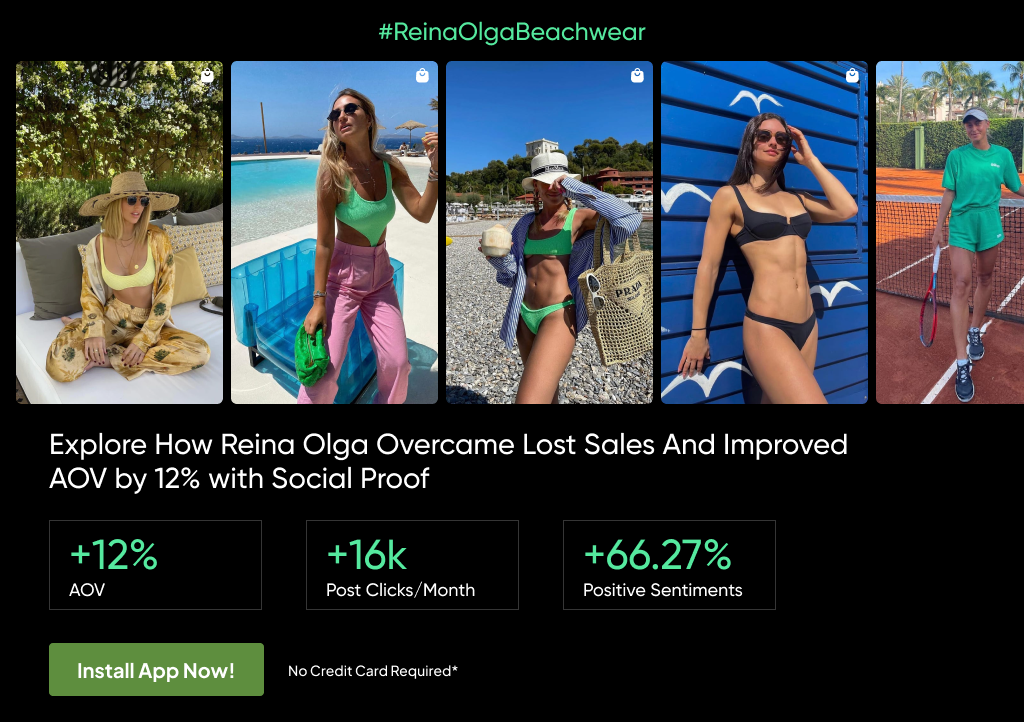
By embedding real content, such as visual reviews on the homepage, brands can substantially improve the website’s visuals and product discovery. So, customers can easily find the products they like and by turning the content into shoppable, brands can encourage customers to make purchases, ultimately boosting sales and revenue instantly.
2. Product Pages
Product pages are the highest-converting landing pages, as this is where customers explore products and head to get all the product details.
By embedding customer reviews present in the form of Google reviews, product videos, or images, on product pages, brands can establish trust and allow customers to make their purchasing decisions confidently.
Additionally, brands can add reviews to Shopify to further build credibility and assist customers in making informed decisions. By showcasing products in action on product pages, brands can provide customers with inspiration and demonstrate how customers are already deriving value from the products.
3. Email Marketing
Another essential marketing touchpoint for e-commerce businesses is emails. Email marketing is hands down the most effective form of communication for brands across industries. Be it brands or SaaS tools, emails are highly value-driving.
Brands can collect customer reviews and host personalized email marketing campaigns by embedding customer reviews of products that customers have shown interest in. These reviews can be user-generated content such as video testimonials, product demonstrations, and more.
By integrating shoppable content into emails, brands can improve brand awareness and visibility, leading to increased sales and overall brand growth.
Social Media Platforms
Brands can also collect customer reviews and showcase them on their social media channels. For many brands, collection of customer reviews is a challenge, but there are many tools that help brands facilitate accessible collection.
For example, Tagshop offers SnapUp – a feature that allows brands to collect customer reviews and UGC easily. Customers can upload textual reviews, ratings, visual content easily through QR Codes or an uploader link without any mandatory social log-ins.
Brand scan collect reviews from customers and repurpose the by sharing them on social media to build trust among their social audience.
- Free Features +
- Product Page Galleries
- Scan & Collect UGC
- Shoppable Email Gallery
- Revenue Analytics
- Shopon.bio (Shoppable linkin.bio)
- Earn $20k MoM
- Essential +
- Product Catalog Mangmnt.
- Full Page ‘Shop The Look’ Gallery
- Unlimited Product Tags
- Influencer Partnership & Management
- Shoppable Videos
Conclusion
Customer reviews might sound like a simple element, but holds immense power to actually drive a customer from an intended purchase to a successful one. The advantages of having authentic customers reviews cannot be overstated, especially in current times, when social proof is the most valuable tool to grow any e-commerce brand successfully.
However, what’s important to understand is that unlike before, customer reviews don’t just mean textual reviews – visual reviews like UGC images, video testimonials and product reviews are becoming the trend of the times.
Choose reviews for your business wisely and don’t hesitate to rely on apps like Tagshop that can truly help you sell better through social proof.

Frequently Asked Questions
It depends on which review app you are using. Various apps in the market provide very limited features, may be very expensive, or are unable to cater to your brand’s specific requirements. In such cases, it is essential to perform proper research before investing in an app.
Receiving fake reviews is a common problem various businesses face. If you are sure that you have received a fake review, the first step is to report or flag the user. Many review platforms also offer brand reputation management features to find and automatically delete such reviews.
Brands can host loyalty programs and offer incentives in return for detailed reviews. Many companies also put a mandatory word count request – which means while leaving reviews; customers have to write a minimum number of words.
